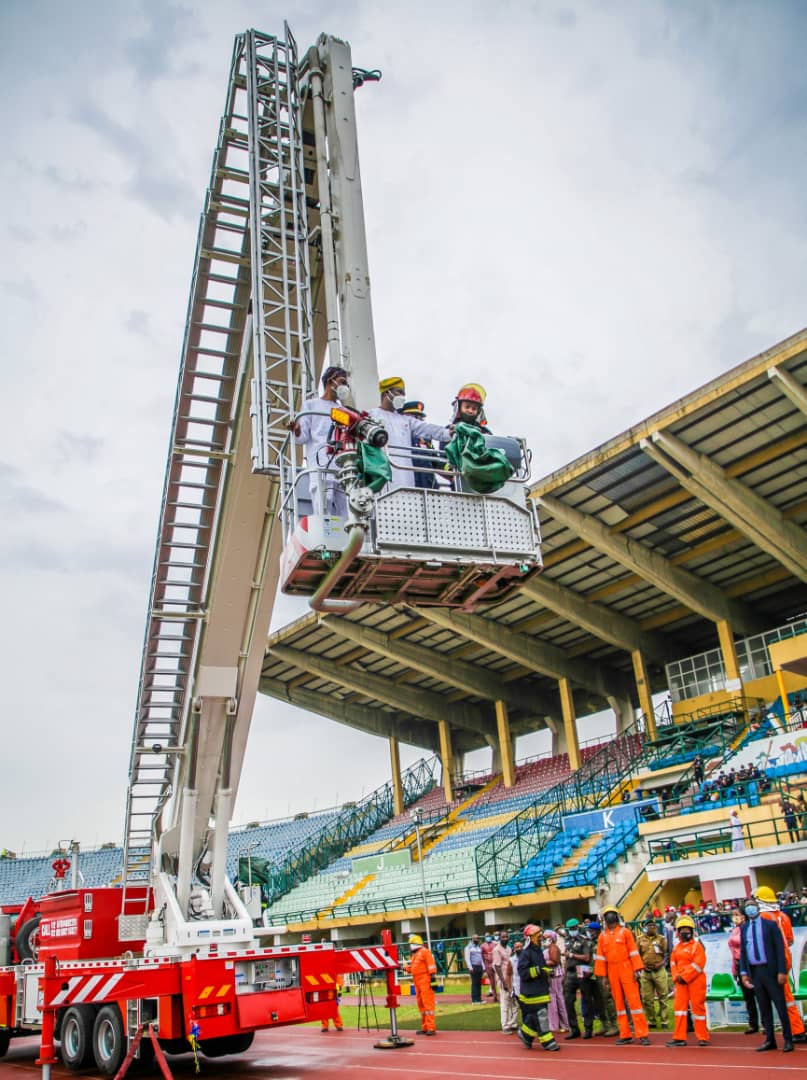
Lagos State Deputy Governor, Dr. Kadri Obafemi Hamzat has stressed the need for Nigeria to have a uniform “Combustible Standard Law” guiding tankers and articulated vehicles to protect lives and property of the citizens, loss to fire and accidents involving such vehicles.

Speaking at the commissioning of the Aerial Hydraulic Platform Mercedes Benz Fire Truck of 54 metres working height, in Lagos on Wednesday, Dr. Hamzat, represented the Governor, Mr Babajide Sanwo-Olu noted that 45 percent of petroleum products come to Lagos, with the consequence of trucks catching fire destroying lives and properties. He said there was a need for the state to work with the Federal Fire Service to ensure that the combustible standards are met before the truck loads.
According to him “life is the most important gift, without which nothing else matters, therefore fire that consumes lives and property is important to everyone of us”.
Speaking further, the Deputy Governor noted that Sanwo-Olu’s administration takes fire service seriously noting that the State first bought the aerial hydraulic platform Fire Truck as far back as 2012 and currently has four of them.
While reiterating the effort of the government on fire service, Hamzat noted that the state has close to 700 firefighters employed and 500 to be recruited very soon. He added that there are 18 fire stations across the State.
He thanked the State Fire Service for their consistent support that “whenever there is need for their service and they are called upon, they work with us well”.
Earlier in his remarks, the Minister of Interior, Ogbeni Rauf Aregbesola stated that the Federal Government is committed to safeguarding lives and property and will not relent in its effort towards making policies, resources and strategies for a safer Nigeria.
The Minister noted that under the Buhari administration, Federal Fire Service has spread to nearly all the states of the federation and the “Federal Government will keep improving on our infrastructure and bring innovations, in the bid to protect lives and property and put fire under control”.
Accordingly, the Minister stated that the DG54 Aerial Platform Fire Fighting Truck has 54 metres height capacity and will reach 18th floor of high-rise buildings. He noted that this has been a challenge in Lagos especially with a plethora of skyscrapers and a nightmare to fire fighters and this will be a thing of the past now.
Aregbesola also noted that the Federal Fire Service has since expanded beyond the two in Lagos and Abuja, and now has a presence in almost all the states of the Federation. He added that the fundamental changes are taking place all over the fire service.
He spoke of the need to explore partnerships with such agencies as the air force in firefighting using helicopters, adding that the fire service is prepared.
He disclosed that properties worth N1.351trillion were saved from fire in the last year, adding that 94 fire service vehicles had been approved for procurement recently by the Federal Executive Council.
Likewise, in his remarks, the Controller General of Federal Fire Service, Dr. Liman Ibrahim stated that fighting fires in high-rise building comes with a lot of challenges especially in Lagos where the service had in the past contended with multi-story buildings without appropriate equipment. The procurement of the DG54 Aerial Platform Fire Fighting Truck has 54 metres height capacity is expected to significantly address these challenges and minimize the risk firefighters are exposed to in the line of duty.









